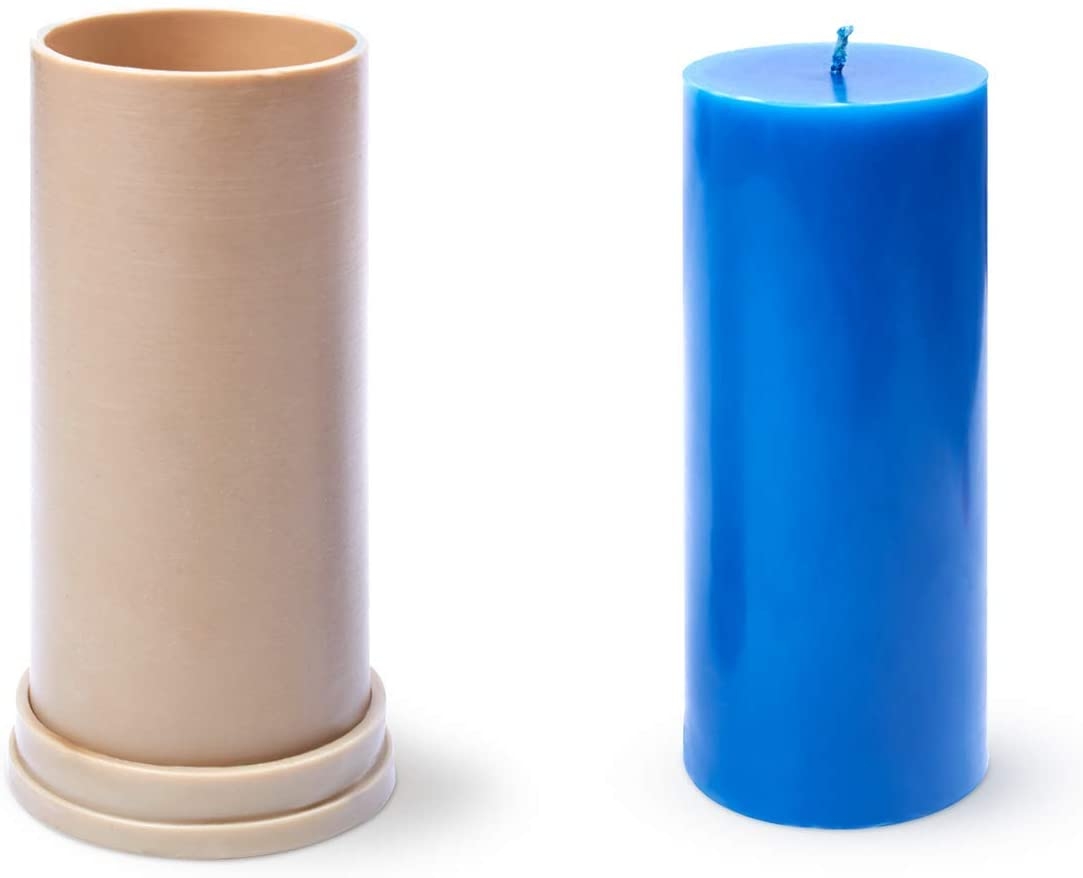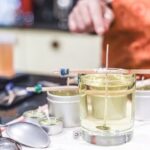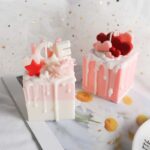Candle making is a creative and fulfilling craft that allows individuals to create their own unique scented candles. However, one crucial aspect of the candle making process that is often overlooked is cleaning candle making supplies. Learning how to clean candle making supplies is essential for maintaining the quality of your candles and ensuring a safe workspace.
Properly cleaning your candle making supplies not only helps in prolonging their longevity but also plays a significant role in the overall quality of your candles. Residues left behind from previous batches can affect the scent, color, and even burn time of your new candles. By taking the time to clean your supplies thoroughly, you are investing in the success of your candle-making endeavors.
In this article, we will discuss the importance of cleaning candle making supplies, as well as provide a detailed guide on essential cleaning supplies needed for efficiently maintaining your tools and equipment. By following these tips and techniques for cleaning wax residue, fragrance oils, dyes, molds, containers, utensils, and tools used in candle making, you can ensure consistent quality in your creations and create a safe and organized work environment for all your future projects.
Essential Supplies for Cleaning
When it comes to making candles, ensuring that your supplies are thoroughly cleaned and well-maintained is crucial for producing high-quality candles. Not only does cleaning candle making supplies help in maintaining hygiene standards, but it also plays a significant role in the overall candle-making process. By properly cleaning your tools and materials, you can avoid any contamination issues, ensure consistent results, and extend the lifespan of your supplies.
List of Essential Supplies
To effectively clean your candle making supplies, you will need a few essential items on hand. Some of these include hot water, mild dish soap or detergent, microfiber cloths or paper towels, rubbing alcohol or white vinegar for disinfecting, old toothbrushes for scrubbing hard-to-reach areas, and a drying rack. These supplies will help you clean different components of your candle making tools efficiently.
Why Each Supply Is Necessary
Hot water and dish soap are necessary for removing wax residue and dirt from various surfaces. Microfiber cloths or paper towels are essential for wiping down surfaces without leaving lint behind. Rubbing alcohol or white vinegar can be used to disinfect your tools and prevent any bacterial growth.
Old toothbrushes come in handy for scrubbing molds or containers with intricate details. Lastly, having a drying rack allows air circulation around your cleaned items to dry them thoroughly before storage. With these essential supplies at your disposal, you can maintain cleanliness in your candle making workspace effectively while extending the life of your tools and equipment.
Cleaning Wax Residue
Candle making can be a messy process, leaving behind wax residue on various tools and surfaces. It is crucial to properly clean off this residue to ensure the quality of your candles and maintain the longevity of your supplies. Here is a step-by-step guide on how to effectively remove wax residue from your candle making tools:
- Begin by scraping off any excess wax with a butter knife or scraper.
- For stubborn residue, use a paper towel or cloth soaked in hot water to gently wipe away the remaining wax.
- To tackle any remaining residue, use a mixture of warm water and dish soap to wash the tools thoroughly.
Preventing wax buildup in the future is key to maintaining clean candle making supplies. After each use, make sure to wipe down your tools and surfaces with a clean cloth to remove any traces of wax. Additionally, consider using protective measures such as disposable liners or parchment paper to minimize direct contact between your materials and melted wax.
Remember, regular cleaning and maintenance of your candle making supplies will not only result in better quality candles but also prolong the life of your tools. By following these simple steps on how to clean candle making supplies, you can ensure a more enjoyable and successful candle making experience.
Cleaning Fragrance Oils and Dyes
To start cleaning up spills or stains caused by fragrance oils or dyes, first blot the affected area with a clean microfiber cloth to absorb as much of the liquid as possible. Then, mix equal parts of white vinegar and water in a spray bottle and spritz the stained area before gently wiping it with another clean cloth.
For tougher stains, you can use rubbing alcohol on a cloth to break down the residue before wiping it away with warm soapy water.
Proper storage of fragrance oils and dyes is also crucial in preventing spills and stains. Make sure to tightly close bottles after each use and store them in a cool, dark place away from direct sunlight or heat sources. Additionally, consider using spill-proof containers or trays to contain any potential leaks or drips from these supplies. By following these cleaning techniques and storage tips, you can maintain a clean workspace for successful candle making.
| Cleaning Supply | Usage |
|---|---|
| Microfiber cloth | To absorb spills and gently wipe surfaces |
| Rubbing alcohol | For tough stains caused by fragrance oils or dyes |
| White vinegar | Mixed with water for stain removal |
Maintaining a Clean Work Area
Keeping a clean work area is essential for successful candle making. Not only does it help in creating high-quality candles, but it also ensures a safe and organized workspace. Here are some recommendations for maintaining cleanliness in your candle making area:
- Regularly wipe down surfaces: Use a damp cloth or disinfectant wipes to clean surfaces where you work with fragrances, dyes, and wax. This will prevent cross-contamination and ensure that your candles remain free from impurities.
- Organize supplies: Invest in storage containers, shelves, or drawers to keep your candle making supplies tidy and easily accessible. This will not only save you time when crafting candles but also prevent clutter in your workspace.
- Clean as you go: After each candle-making session, take the time to clean up any spills or drips on surfaces, tools, or containers. This habit will make it easier to maintain a clean work area overall.
By following these simple tips, you can create a conducive environment for producing beautiful and high-quality candles. Remember that a clean workspace is not only visually appealing but also crucial for the success of your candle-making endeavors.
For more information on how to clean candle making supplies, refer back to the previous sections of this article for specific techniques on cleaning molds, utensils, tools, fragrance oils, dyes, and maintaining proper storage techniques to keep your supplies in top condition.
Cleaning Molds and Containers
One effective way to clean candle molds and containers is by using hot water and dish soap. Start by filling a sink or basin with hot water and adding a few drops of mild dish soap. Let the molds and containers soak in the soapy water for about 15-20 minutes to help loosen any wax residue. Then, use a soft sponge or cloth to gently scrub away any remaining wax.
For stubborn wax residue, you can also try using rubbing alcohol or vinegar. Simply apply a small amount of either substance to a cloth or paper towel and wipe down the surfaces of the molds and containers. The alcohol or vinegar will help dissolve the wax, making it easier to wipe away. Be sure to rinse the molds and containers thoroughly with warm water after cleaning to remove any leftover residue.
Properly cleaning molds and containers not only ensures the longevity of your supplies but also helps maintain the quality of your candles. By following these simple cleaning techniques regularly, you can prevent cross-contamination of scents and colors in your candles, resulting in consistently high-quality products. Remember to store your cleaned molds and containers in a dry, cool place to prevent dust or debris from settling on them before their next use.
| Benefits | Techniques |
|---|---|
| Ensures longevity of supplies | Hot water & dish soap method |
| Maintains quality of candles | Rubbing alcohol or vinegar method |
| Prevents cross-contamination | Proper storage tips |
Cleaning Utensils and Tools
Step-by-Step Instructions for Cleaning Candle Making Tools and Utensils
Cleaning utensils and tools used in candle making is essential to ensure that your candles are of high quality and free from any contamination. To clean your tools effectively, start by scraping off any excess wax residue with a butter knife or scraper. For stubborn wax buildup, you can use hot water to soften the wax before scrubbing it off with a sponge or brush.
Next, prepare a cleaning solution using warm water and dish soap. Submerge the tools in the soapy water and let them soak for a few minutes to loosen any remaining residue. Then, scrub the tools with a brush or sponge to remove any dirt or debris. Rinse thoroughly with clean water to ensure all soap residue is removed.
After cleaning, allow the tools to air dry completely before storing them away. It’s important to make sure that no moisture is left on the tools as this can lead to mold growth or rusting. Regularly inspect your tools for any signs of wear and tear, and replace them if necessary to maintain the quality of your candles.
Importance of Regular Maintenance and Cleaning for Extending Tool Lifespan
Proper maintenance and regular cleaning of candle making tools and utensils not only ensures the quality of your candles but also extends the lifespan of your equipment. By removing wax residue promptly after each use, you prevent buildup that can be harder to remove later on. This simple step can help keep your tools in good condition for longer periods.
Regularly inspecting your tools for any damage or wear also allows you to address any issues early on before they affect the quality of your candles. By taking care of your equipment properly, you save money in the long run by avoiding the need for frequent replacements.
In addition to cleaning, storing your tools properly is also crucial in maintaining their quality. Store clean, dry tools in a designated storage area away from direct sunlight or moisture to prevent rusting or damage. By following these maintenance tips, you can ensure that your candle making supplies are always ready for use and in good condition.
Proper Storage Techniques
After spending time meticulously cleaning your candle making supplies, it is crucial to store them properly to maintain their cleanliness and ensure their longevity. Proper storage techniques not only keep your supplies organized but also help prevent any contamination or damage that could affect the quality of your candles. Here are some guidelines for storing cleaned candle making supplies effectively.
First and foremost, make sure to store your supplies in a cool, dry place away from direct sunlight. Extreme temperatures can compromise the quality of certain materials like fragrance oils or dyes, so be mindful of where you are storing these items. Consider investing in storage containers or bins specifically designed for candle making supplies to keep everything organized and easily accessible.
Additionally, it is essential to label each container or storage space with the contents inside. This not only helps you quickly locate specific supplies when needed but also prevents any mix-ups or confusion during the candle making process. Keep similar items grouped together, such as wicks and wick holders or different types of dyes and fragrance oils, to streamline your workflow.
Lastly, regularly check on your stored supplies to ensure everything remains clean and undamaged. If you notice any spills or leaks, address them immediately to prevent any potential contamination. By following these proper storage techniques, you can maintain the quality of your cleaned candle making supplies and set yourself up for successful candle making endeavors in the future.
Conclusion
In conclusion, it is evident that maintaining clean candle making supplies is crucial for producing high-quality candles. By properly cleaning and organizing your supplies, you can prevent contamination, improve the longevity of your tools, and enhance the overall candle-making process. Following the guidelines and techniques outlined in this article on how to clean candle making supplies will not only result in better candles but also make your work area a more pleasant and efficient space.
Consistently cleaning wax residue, fragrance oils, dyes, molds, containers, utensils, and tools is essential for successful candle making. By following the step-by-step instructions provided and implementing proper storage techniques, you can ensure that your supplies are always ready for use. Additionally, maintaining a clean workspace not only increases productivity but also promotes a safe environment for candle making.
Remember that cleanliness is key when it comes to candle making. Make it a habit to regularly clean and organize your supplies to streamline your process and achieve optimal results. By taking care of your tools and materials properly, you can enjoy the art of candle making even more while producing beautiful candles every time.
Frequently Asked Questions
What Is the Easiest Way to Clean Candle Making Supplies?
The easiest way to clean candle making supplies is by using hot, soapy water to wash off any leftover wax residue. Make sure to scrub them thoroughly to remove all traces of wax before rinsing and drying them completely.
How Do You Clean Equipment After Candle Making?
Cleaning equipment after candle making involves using a combination of hot water, dish soap, and a sponge or brush. Make sure to clean each piece meticulously, especially removing any wax buildup in crevices or on surfaces. Allow the equipment to air dry completely before storing it.
How Do You Clean a Candle Wax Kit?
To clean a candle wax kit, start by letting any leftover wax solidify before scraping it off with a dull knife or spatula. Then, wash the components with warm, soapy water using a soft cloth or sponge. Ensure everything is dried properly before reassembling the kit for future use.

Welcome to my candle making blog! In this blog, I will be sharing my tips and tricks for making candles. I will also be sharing some of my favorite recipes.





